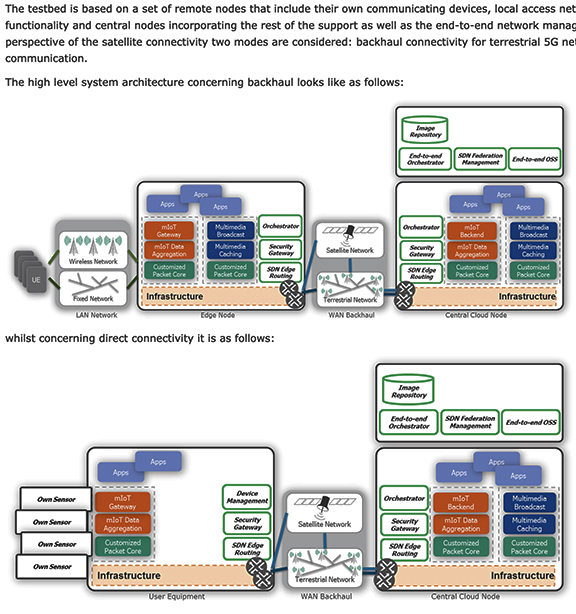
VT iDirect, a company of VT Systems,has completed a successful proof of concept testing for the firm's OSMOSIS video content distribution technology designed to operate over a satellite network with 4G/5G and Multi-access Edge Computing (MEC) integration.
OSMOSIS technology transforms multimedia streaming on mobile devices by leveraging efficiencies of a tightly integrated hybrid cellular and satellite network, enhancing user streaming experience and reducing network operation costs. Following 18 months of technology development in partnership with Software Radio Systems and the European Space Agency, a live over-the-air OSMOSIS demonstration will be showcased for the first time over the SATis5 5G satellite test bed enabled by VT iDirect, SES and Fraunhofer FOKUS at Mobile World Congress (MWC) in Barcelona on February 25 – 28, 2019.
The OSMOSIS proof of concept is demonstrated using the SATis5 testbed network showcasing 4G and 5G satellite-enabled user applications. Users will be able to experience multi-media content delivery to smartphones and laptops via satellite-connected base stations in an over-the-air live demo, while experiencing firsthand the benefits of multi-access content delivery and network edge caching.

Satis5 system architecture infographic. Image is courtesy of ESA.
The test bed, enabled by the ESA ARTES funded project SATis5 and the SATis5 consortium members VT iDirect, SES and Fraunhofer FOKUS, provides a platform to demonstrate satellite and 5G use cases, and is built on iDirect hub and remote ground infrastructure as well as Fraunhofer’s 5G technology. The successful 5G integration in a live satellite environment using a Software-Defined network (SDN), Network Functions Virtualization (NFV), and MEC techniques and technologies is made possible by SES’ geostationary satellites, global teleport network and IP transit infrastructure.
OSMOSIS technology enables adaptive content distribution, local content caching, and local transcoding at the radio access network (RAN) edge. Further, the implementation is based on ETSI MEC technology, which reduces network congestion and maximizes capacity and security for the operator. These advances combine to generate new levels of traffic optimization and cost-effectively support surging video bandwidth demands in the mobile network.
To see the live demo at MWC 2019, please visit the SES booth (Networking Garden, GG3) where SATis5 consortium experts will be on the ground.
Executive Comments
Richard Lord, VP, Engineering, Strategic Initiatives, VT iDirect, said the key to supporting the global explosion in video content is to push intelligence and processing to the edge. The company is thrilled to take this major next step in enabling the OSMOSIS technology in proof of concepts for customers, while advancing satellite technology to operate seamlessly in a future 5G connected world.
Antonio Franchi, Head of ESA’s Satellite for 5G and Future Programs Acquisition, added that projects like OSMOSIS are extremely valuable to the company;s Satellite for 5G Initiative's mission to promote the benefits of space-enhanced 5G services. Successful integration between satellite and terrestrial networks is key, and this demonstration is an important next step in showing interested partners that it works, while also advancing satellite technology to operate seamlessly in the future 5G-connected world.

